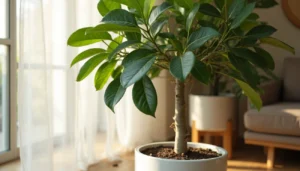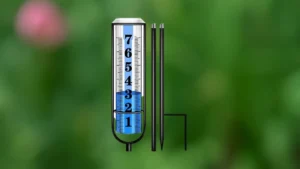Maintaining a lush, green lawn requires a reliable irrigation system. Lawn sprinklers are crucial for keeping your grass healthy and vibrant, but they can encounter issues over time. If your sprinkler system isn’t functioning correctly, don’t worry! “Fixing lawn sprinklers” doesn’t have to be difficult. This guide provides easy troubleshooting tips to get your sprinklers back in shape, ensuring your lawn gets the water it needs to thrive. Let’s dive into the most common sprinkler problems and how to fix them.
Understanding Common Lawn Sprinkler Problems
Lawn sprinklers can encounter a range of issues that prevent them from performing optimally. If you notice dry spots or an inconsistent water flow, it could be a sign of a malfunctioning sprinkler system. Common problems include clogged sprinkler heads, low water pressure, broken pipes, or faulty valves.
The first step in fixing lawn sprinklers is identifying the problem. Check for any visible signs of damage or issues with the sprinkler heads. Look for any standing water or leaks in the system, as these could be indicative of a broken pipe. If your sprinklers are not rotating or spraying properly, there may be an issue with the nozzle or valve.
Regular maintenance and inspection of your sprinkler system are essential to preventing these issues and ensuring that your lawn receives the proper amount of water.
Step by Step Guide Fixing Lawn Sprinklers
Step 1: Check Sprinkler Heads for Clogs
One of the most common issues when fixing lawn sprinklers is clogged or dirty sprinkler heads. Over time, dirt, debris, and mineral buildup can block the nozzles and prevent water from flowing properly. If you notice that your sprinkler is not spraying evenly or at all, it’s likely that the sprinkler head is clogged.
To fix this, remove the sprinkler head from the system and clean it thoroughly. Use a small brush, such as an old toothbrush, to remove debris from the nozzle. You can also soak the head in a vinegar solution for a few hours to dissolve any mineral buildup. After cleaning, reassemble the sprinkler head and check to see if it’s working properly. Replacing sprinkler heads is an easy task and can restore full functionality to your sprinkler system.
Step 2: Inspect Water Pressure
Low water pressure is another common problem when fixing lawn sprinklers. If your sprinklers are not spraying as they should, it could be a sign of inadequate water pressure. Low pressure can result from various factors, such as clogged pipes, faulty valves, or an issue with the water supply itself.
To troubleshoot low water pressure, first check the water source. Make sure the water valve is fully open and there are no obstructions in the line. If the pressure seems low throughout the entire system, you may want to check for leaks in the pipes or look for any blocked or damaged sprinkler heads.
If you suspect a leak in the pipe, you can perform a simple test by turning off the sprinklers and inspecting the area for any wet spots. This is a relatively simple fix but may require some digging, depending on where the leak is located.
Step 3: Check for Broken Pipes and Leaks
Broken pipes and leaks are common culprits when fixing lawn sprinklers. If you notice areas in your lawn that remain excessively wet, or if your water pressure has significantly dropped, a broken pipe may be the issue. In some cases, the pipe may be cracked or damaged due to age, weather conditions, or ground movement.
To check for broken pipes, turn off the water supply to your sprinkler system and inspect the pipes visually. Look for any cracks, leaks, or signs of damage. If you find a broken section, you may need to replace that part of the pipe. PVC pipe repair is fairly straightforward and involves cutting the damaged section and connecting a replacement pipe with the appropriate fittings.
If you’re not familiar with plumbing repairs, it’s worth hiring a professional to handle the task. It’s important to ensure the pipe is properly sealed to avoid further damage or leaks.
Step 4: Inspect the Sprinkler Valves
Sprinkler valves control the flow of water to each zone in your system. If you’re having trouble with inconsistent watering or no water coming out of some sprinkler heads, the issue could be with the valves. Faulty or clogged valves can prevent water from reaching certain areas of your lawn, leading to dry patches.
To inspect the valves, locate the valve box and open it to check for any visible signs of wear or debris. If the valves appear dirty or clogged, clean them out carefully. Sometimes, dirt or debris can prevent the valve from opening fully, which restricts water flow.
In some cases, the valve may need to be replaced if it’s not functioning properly. This is a bit more complex than cleaning the valves, but it’s a necessary fix if your system is not distributing water evenly.
Step 5: Repair or Replace the Controller
The controller is the brain of your sprinkler system, allowing you to schedule watering times and control each zone. If your sprinkler system is not turning on or following the correct schedule, the issue may lie with the controller. A faulty or outdated controller can result in erratic watering patterns or no watering at all.
If the controller is still malfunctioning, try resetting it and programming it again. If this doesn’t solve the problem, the controller may need to be replaced. Modern controllers are available with advanced features, such as Wi-Fi compatibility and weather-based adjustments, allowing you to easily manage your sprinkler system from your smartphone.
Step 6: Consider Seasonal Maintenance
If you live in a region with harsh winters, it’s important to winterize your sprinkler system to avoid freeze damage. Frozen pipes or sprinkler heads can crack or break, leading to costly repairs when you start up the system again in the spring.
Before the first frost, make sure to drain the water from the system and shut off the main water supply to your sprinkler. You may also want to blow out the system with compressed air to ensure that no water remains in the pipes.
Also read it: Top 10 Common Problems with Roses for Beginners
Preventative Measures to Avoid Future Problems
Preventing sprinkler issues is key to ensuring your system runs smoothly year after year. Regular maintenance and inspections can help identify potential problems early on, saving you time and money in the long run. Here are some tips to keep your sprinkler system in top shape:
- Clean sprinkler heads regularly to prevent clogging.
- Check water pressure at least once a season to ensure optimal flow.
- Inspect valves and pipes for leaks or damage.
- Replace damaged parts promptly to avoid larger issues.
- Winterize your system before the cold weather hits.
By following these simple maintenance tips, you can extend the life of your sprinkler system and keep your lawn healthy year-round.
When to Call a Professional for Fixing Lawn Sprinklers
While many sprinkler issues can be fixed by homeowners with a little know-how, some problems may require the expertise of a professional. If you’re dealing with complex issues like a broken mainline, electrical problems with the controller, or extensive pipe damage, it’s best to call a licensed plumber or irrigation specialist. They can accurately diagnose the issue and perform repairs to restore your system’s functionality.
Conclusion
In conclusion, fixing lawn sprinklers doesn’t have to be overwhelming. With regular inspections, timely repairs, and some basic troubleshooting knowledge, you can keep your sprinkler system working efficiently and your lawn looking beautiful. Whether you’re dealing with clogged heads, low water pressure, or broken pipes, these tips will guide you through the process of getting your sprinklers back in top shape. Happy gardening!
Frequently Asked Questions (FAQ)
1. How often should I check my sprinkler system?
It’s a good idea to inspect your sprinkler system at least twice a year—once in the spring before you start using it and once in the fall before you winterize it. Additionally, check the system monthly during the growing season to ensure everything is working as it should.
2. My sprinkler heads are clogged. How do I fix this?
Clogged sprinkler heads can be easily cleaned. Remove the sprinkler head, clean out any debris using a small brush or toothpick, and soak it in vinegar to dissolve mineral buildup.
3. What should I do if I notice low water pressure?
First, check for any visible leaks or obstructions in the pipes and sprinkler heads. You can also check the water valve to ensure it’s fully open. If the issue persists, you may need to consult a professional to diagnose and fix any potential underlying issues with the system.
4. How do I know if my sprinkler system has a broken pipe?
Signs of a broken pipe include puddles or soggy areas in your yard, reduced water pressure, or sporadic water flow. To check, turn off the water supply, then visually inspect the pipes for cracks or leaks. If you find a broken pipe, you’ll need to replace that section.
5. Can I repair my sprinkler system myself, or should I hire a professional?
Many sprinkler issues, such as cleaning clogged heads or replacing a faulty sprinkler head, can be handled by homeowners. However, if you encounter more complex problems like broken pipes, electrical issues with the controller, or extensive valve repairs, it’s best to consult a professional irrigation specialist.


